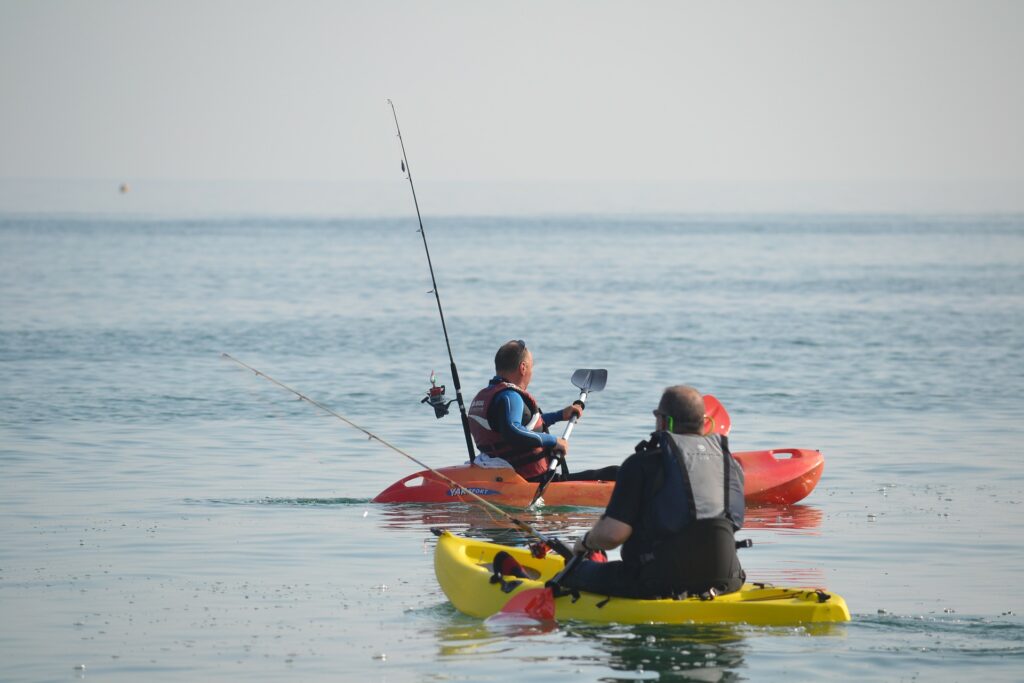BY TYLER FRANTZ
Kayaking as a mode of water transportation dates back to the earliest origins of Native American living, but it has grown immensely popular as of late — likely a result of mass-scale production, affordable options and widespread availability.
More and more Pennsylvanians purchase kayaks for recreation and exercise on the state’s numerous public waterways, but they come in handy as easy-to-tote fishing vessels, too. Their versatility allows anglers to fish in ponds, lakes, rivers or even mid-sized creeks from the comfort of a well-organized cockpit, gaining access to otherwise difficult-to-reach locations.
There are, however, some kayak pointers to consider before taking the plunge of fishing from these small watercrafts.
Safety
Consider safety as the top priority. It is easy to take for granted, but always wear a personal flotation device when kayaking. The majority of Pennsylvania boating fatalities list victims as not wearing PFDs.
Discomfort is no excuse, as there are many fishing/kayaking models available that are sleek and breathable, allowing freedom of movement, and even some with built-in compartments for lures and other gear. Those with mesh uppers and self-inflating options are also reasonable choices. Just wear it to be safe if the unexpected happens.
Likewise, pay attention to the intended use of the vessel. Some are designed for flat, lentic water, while others are made for lotic environs where water is flowing. If the kayak feels tippy or is a sit-on-top model, stick to ponds and lakes. If the kayak has a more stable, sit-in design, try navigating moving water.
Gear selection
In terms of gear selection, it is up to each individual angler to determine how they want to make their craft. A basic setup includes a rod holder, net holder (if desired), paddle leash and some sort of storage area. Many angling-specific models come with these built in, with plentiful add-ons available from outdoors retailers. It is best to use a simple spinning rod outfit that is small and easy to maneuver quickly between rod holder and hand.
Consider adding a tether from rod to kayak as well, since hookups can sometimes pull rods overboard before paddlers can react. A small selection of go-to, dual-purpose lures is advised paired with a snap swivel to change lures quickly and easily. A rubber net instead of a cloth/mesh one will reduce frustrating entanglements with lures for quicker fish releases, and a tie-off or small anchor also may prove helpful if locating a place worth devoting more time to fishing.
Organization
Organization is imperative with kayak angling, because there is a lot going on and everything happens at the same time. It may be fun navigating rapids, landing a nice smallmouth bass and dealing with a spilled lure box at the same time, but is not recommended.
Try to keep lures secured in an easy access location and close the box before making a cast. If there are obstacles approaching, reel in and focus on paddling. Have the net and rod holders within reach, and store non-immediate essentials such as bottled water, extra clothes and a first aid kit in a dry bag or sealed hull box out of the way.
At home, keep all kayak-angling gear together, so when you want to go fishing you can load up and head out.
Techniques
On flat water, parallel up to structure on your non-dominant side, lay the paddle across your lap and cast across your body with your strong arm to present bait or work a lure back to your location.
When fishing moving water, forego live baits for spinners, crank-baits or soft-tailed swim baits because fishing will be quick.
In some areas, you may be able to toss one-handed between paddles to likely holding locations. Other times, you may have to troll a lure.
Fish are caught both ways, which leads to some rapid-fire negotiating between kayak control and fish retrieval. Another option is to pull off at the best areas to wet wade or fish from dry ground and move on.
Kayak angling can be a blast, but it does have some challenges.




